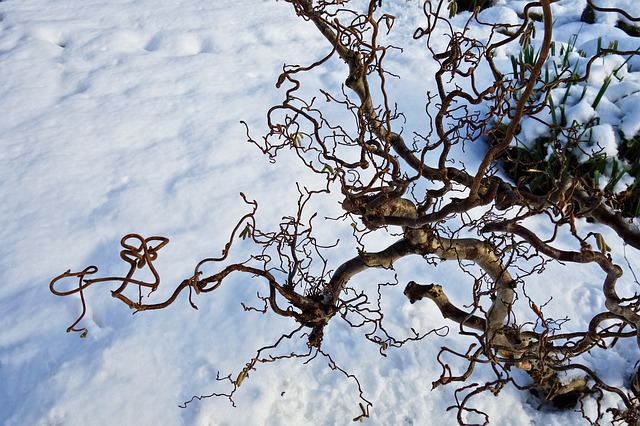This is the second and final part of a series on weeping willow cultivars.
Introduction
Weeping willow is a popular ornamental tree that is often selected for planting in landscape settings due to its elegant branching habit, and attractive, tan colored catkins. Throughout its range, numerous cultivars have been developed from weeping willow. Each cultivar exhibits its own unique traits. The following examines some of the most notable varieties, including ‘Pendulina’, ‘Pentachdra’, ‘Sepulcralis’, and ‘Tortuousa’.
‘Sepulcralis’, also referred to as ‘Chrysocoma’, Golden Weeping Willow, ‘Vitellina Pendula’, or Weeping Golden Willow, is a medium to large sized cultivar of weeping willow. ‘Sepulcralis’ has a weeping habit, with arching branches that festoon down the length of the trunk. Young leaves are yellow-green. As the season progresses, the leaves mature to a glossy green. This green coloration lingers into fall. Tan catkins containing male and female flowers form on the branches in spring. ‘Sepulcralis’ requires full sun, and abundant moisture to grow efficiently. It is adaptable to wide range of soil conditions, and is flood resistant. ‘Sepulcralis’ is the most widely grown variety of weeping willow across the temperate regions of the world. It is hardier and has a longer life-span than that of the parent species.
‘Tortuousa’, also referred to as corkscrew willow or tortuous willow, is a variety of weeping willow with distinctly sinuous, spiraling branches. It develops at a fast rate, and has an upright, curving form. It is a medium sized tree, reaching heights of 25 to 30 feet, with a 15 to 20 foot spread. The branches appear twisted. The leaves are also curly. They are colored bright green on the upper leaf surface, while the lower leaf surface has a whitish tone. In fall, the leaves turn a golden-yellow hue. In spring, attractive yellow-green catkins blanket the branches. ‘Tortuousa’ requires full sun, and rich, moist soil to thrive. This variety is hardier than many other weeping willow cultivars. It is also resistant to most parasites.
‘Tristis’, also referred to as golden weeping willow, is a large sized cultivar of weeping willow, growing 50 to 70 feet and wide. This cultivar has an open, rounded crown, and pendulous branchlets that become covered in medium to light green leaves. The green coloration persists until fall, when the leaves turn golden yellow. The twigs are a brilliant gold tone. Small greenish-yellow catkins form on the branches in spring. ‘Tristis’ can be planted in sites ranging from full sun to partial shade. It is tolerant of flood conditions. Like many other cultivars, ‘Tristis’ has brittle branches, and is prone to incurring storm damage, particularly from snow and ice loading.
‘Wisconsin’, also referred to as ‘Pendulina’, pendulous willow, or ‘Pentachdra’, is a medium sized cultivar that grows 30 to 50 feet tall and wide. It develops quickly, adding 2 to 3 feet of growth per year. ‘Wisconsin’ establishes a wide, rounded crown, and a weeping branching habit. In spring, greenish-yellow catkins appear on the pendulous branches. The branches are yellowish-brown to gray-brown, and terminate in yellowish-brown to yellow branchlets. The lanceolate leaves are long, narrow, and pointed. They have a light green coloration from spring into summer. The fall color varies from green to yellow, and is fairly inconspicuous. This cultivar should only be grown on sites exposed to full sunlight. It grows best when planted in moist, well-drained soil.
If you have any questions about weeping willow, or you are interested in one of our tree services, contact us at 978-468-6688, or Sales@IronTreeService.com. We are available 24/7, and can accommodate any schedule. All estimates are free of charge. We look forward to hearing from you.


